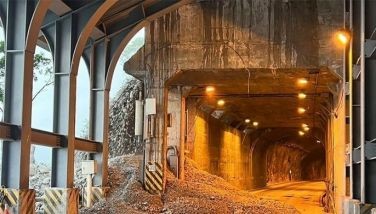Canada to propose tougher oil tank car standards
TORONTO — The Canadian government has proposed tough new standards for rail tank cars used to transport crude oil in response to a string of fiery crashes.
The proposal, posted online Wednesday by Transport Canada, would require the cars to have outer "jackets," a layer of thermal protection, and thicker steel walls.
The requirements are tougher than the oil industry wanted. But the proposal doesn't include electronically-controlled brakes that automatically stop train cars at the same time instead of sequentially, which are opposed by freight railroads. Regulators said they will take that issue up separately.
Final regulations are expected by mid-May. U.S. officials have been working closely with Canada on the regulations and the White House is reviewing a draft proposal.
There have been four oil train derailments in the U.S. and Canada since mid-February. A runaway oil train derailed in Lac-Megantic Quebec in 2013, killing 47 people.
New standards were enacted after Lac Megantic, but safety officials on both sides of the border called for even stronger measures after fiery derailments continued to happen despite the new tank cars standards.
The newest standard calls for a hull thickness of 9/16th of an inch, up from 7/17th of an inch and makes thermal jackets mandatory.
"The proposed requirements are still subject to final approval," said Zach Segal, a spokesman for Transport Minister Lisa Raitt. "We are working to have this done in an expedited manner."
The Transport Canada proposal is a "pretty clear indication" of what final regulations are likely to look like, said Ed Hamberger, president of the Association of American Railroads.
The oil and rail industries want thinner tank walls — half an inch thick, instead of the 9/16ths-inch that regulators propose. The thicker the shell, the less oil a tank car can hold, and with about a half-million carloads of crude hauled by rail in the U.S. and Canada last year, the cost difference could add up.
The tank cars in the recent accidents were built to a voluntary standard written by industry representatives in 2011 to answer criticism that cars used to transport flammable liquids were prone to rupture in an accident and spill their contents and ignite spectacular fires. But most recent accidents show that the newer cars — known as 1232s — also are prone to rupture, even at slow speeds. Trains involved in four recent accidents were traveling under 40 mph (64 kph).
The White House budget office is reviewing a draft proposal for a sturdier tank car design, as well as other safety proposals. U.S. and Canadian officials have been working closely together to coordinate the regulations since the tank cars move back and forth across the border. Railroads and shippers have said if there were separate regulations in each country it could cause significant shipping delays and raise costs.
___
Lowy contributed to this report from Washington.
- Latest
- Trending
































